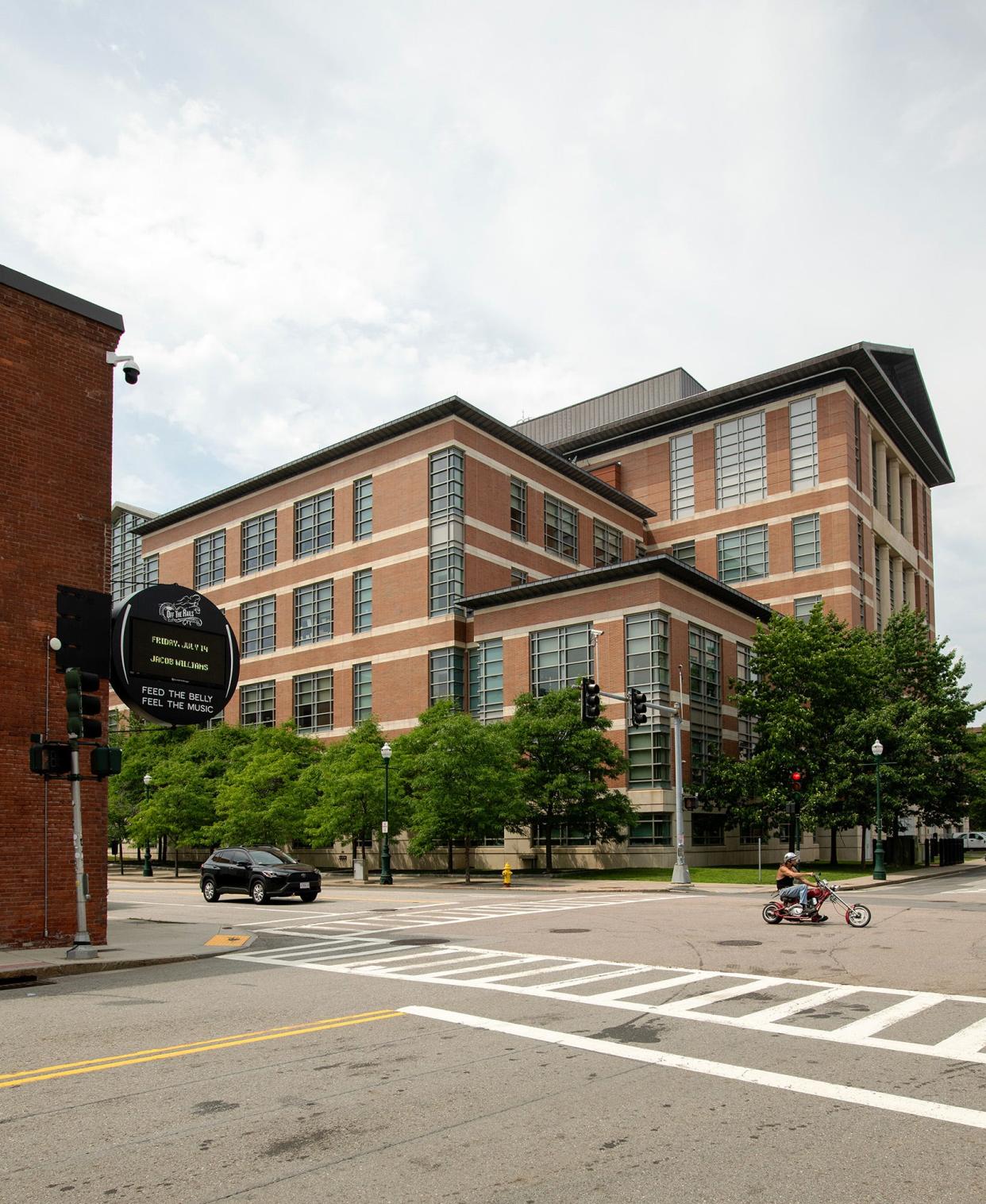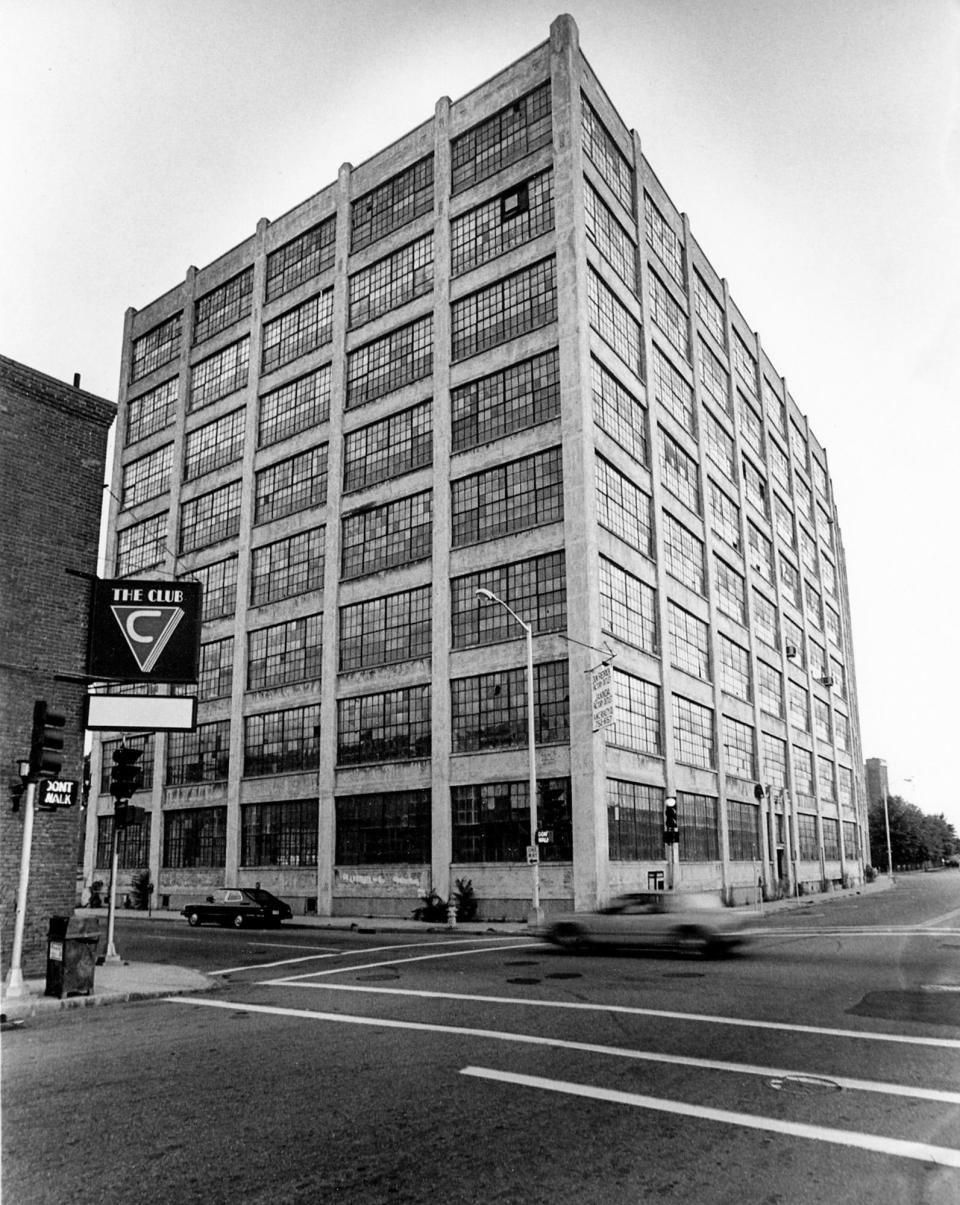Then & Now: Burgess-Lang Building, 54 Commercial St., Worcester


The window-lined Burgess-Lang Building at the edge of downtown Worcester was supposed to be the centerpiece of a $10 million redevelopment project called Commercial Plaza.
Ambitious blueprints were nothing new to the city. The Worcester Civic Center (now DCU Center) and the Worcester Center Galleria (now gone) were projects that were mapped out 40-odd years ago.
The plan for Commercial Plaza was a mix of office, retail and restaurants to the east of northern Main Street. The anchor would be the eight-story, 150,000-square-foot Burgess-Lang Building - shown in this week's Then photo, in 1987.
The Burgess-Lang Building at 54 Commercial St. was built in 1920, when factories were common at the edge of most city downtowns, near rail lines.
The building, razed in 1995, sat at what is now the rear of the Worcester County Courthouse, facing what is now the back of Hilton Garden Inn.
The Burgess-Lang Building was the idea of businessman Maurice F. Reidy and backed by William H. Burgess and Howard W. Lang. Burgess and Lang bankrolled warehouses in Boston, Lowell, Springfield and Haverhill, among other places in Massachusetts.
The Worcester building was subdivided, intended to attract smaller industries.
The need for such a place was pushed by the Worcester Chamber of Commerce, which had been approached by Dennison Manufacturing. The Framingham company was looking for a suitable spot for an outpost in Worcester.
Besides Dennison, other early occupants of Worcester's Burgess-Lang Building were Automatic Measurement and Majestic Manufacturing. And over the years the occupant included Economy Press, Jewell Uniforms, Sportsguide Manufacturing, Master Menu Makers, Don Fredrick Factory Outlet, R.S. Holdredge Tool and Janinda Coat and Skiwear Outlet.
By the early 1980s, with tall buildings out of favor for manufacturing, the building had lost its luster. The owner at the time, Gustronic Realty Trust, pitched an extensive renovation of the building, with retail on the first floor and the construction of an adjancent 420-space parking garage.
The principals of Gustronic, among them George Leroux and Bart Rubin, sought $10 million in industrial revenue bonds for the project.
Another building on the block, the vacant Ziff Paper building, was slated for demolition as part of the project. But when no deal could be reached on that building, which Leroux and Rubin said was a vital piece, the Commercial Plaza plan began to unravel.
Redevelopment plans were put on hold. A few tenants remained, among them Don Fredrick's Factory Outlet and Janida Coat Factory.
In 1984, Brookline real estate developer Philip Schwachman, already the owner of property in Worcester, bought the Burgess-Lang Building for $900,000. In the years that followed, Schwachman added to his portfolio on the block (of Main, Thomas, Commercial and Central streets). He bought the former Union Furniture building and the Gilman Block.
Two years after buying the Burgess-Lang Building, Schwachman proposed an overhaul that would convert the property into residential condominiums. He envisioned high-end living.
Meantime, the building started to show signs of wear. Over the years, there were instances of pieces of concrete falling from the facade.
By the early 1990s, the building was viewed by some as an eyesore. It became vacant and neglected, its many windows an easy target for vandals. The plan for housing was taken off the table.
The wrecking ball arrived in June 1995.
At the time, the parcel was considered a possible piece of a planned convention center.
Eventually, the whole block caught the attention of city and state officials who were looking for a spot to build a new courthouse. The old county courthouse on Main Street needed to be replaced.
After much back-and-forth, in court and elsewhere, the land and buildings on the block were taken by eminent domain, with Schwachman scoffing at early offers.
By the early 2000s, with all the parcels in place, the Gilman Block and others were leveled. Work on the expansive courthouse, stretching from Main to Commercial streets, was completed in 2007.
In the lobby of Worcester Trial Court, a display shows the buildings that once were.
Last week Then & Now: Holden police station, 1420 Main St.
This article originally appeared on Telegram & Gazette: Then & Now: Burgess-Lang Building, 54 Commercial St., Worcester

